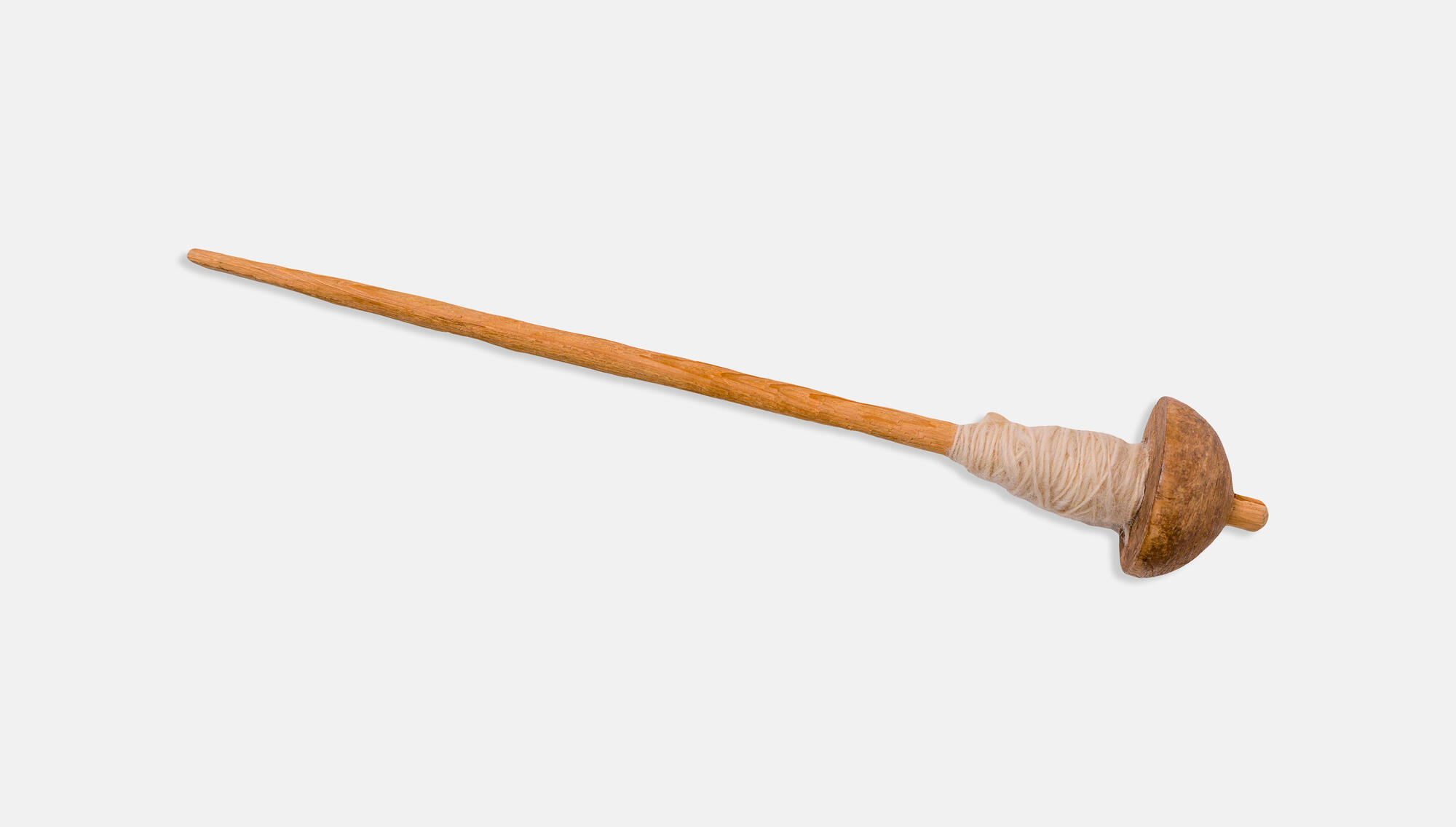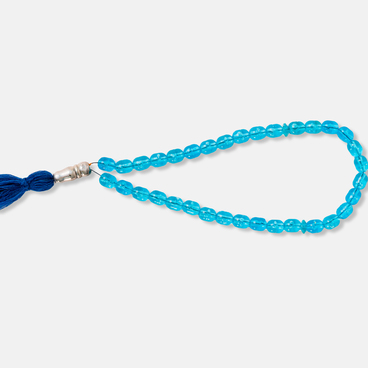The Adygeysk Museum of Local Lore presents a spindle (khetsyku) — a hand tool for yarn-making in the form of a turned wooden stick with a pointed top and a thickened bottom. When rotated, it wound wool into a thread.
The spindle was donated in 2005 to the Adygeysk Museum of Local Lore by Marina Zaurbechevna Chetyz, a resident of Adygeysk. The spindle belonged to her father, Zaurbech Chetyz, who made it himself.
The spinning process consists of two alternating operations: twisting the thread and winding it on the spindle. Spinners from all Slavic and Finno-Ugric peoples of Eastern Europe pull a thread from a tow (prepared fiber) with their left hand, and with their right, they rotate the spindle. In the Caucasus and Central Asia, these operations are carried out with opposite hands.
As a rule, the Adyghe women made cloth from autumn-cut wool. The Adyghe sheared sheep twice a year: in spring — in April and in autumn — in September. Autumn-sheared wool (“tsy”) was more valuable. It was used to manufacture burkas, chokhas, shirts, trousers, bashlyks (hoods). Spring-sheared wool (“patse”) was used for stuffing mattresses and pillows.
In addition to separating autumn- and spring-sheared wool, the Adyghe sorted wool by sex and age of sheep. The wool of unfertilized sheep and lambs was most valuable. The Adyghe also sorted wool depending on the coarseness of the fibers. Wool cut from the sides, back and belly was considered softer.
As a first step, the wool was thoroughly washed and processed on a comb to get rid of the dirt. Then it was whipped with a simple device resembling a small bow and spun with a spindle.
Spindles were made of dry wood, usually birch. The length of the spindle could be from 20 to 80 centimeters. Each spinner had her own spindle. Spindles were made by fathers for their teenage daughters or men for their significant other.
The spindle has a lower rotation speed than the spinning wheel. However, the spindle can always be kept at hand. It is a cheaper and simpler device. Just a few minutes of spinning with a spindle can produce a surprisingly long thread.

